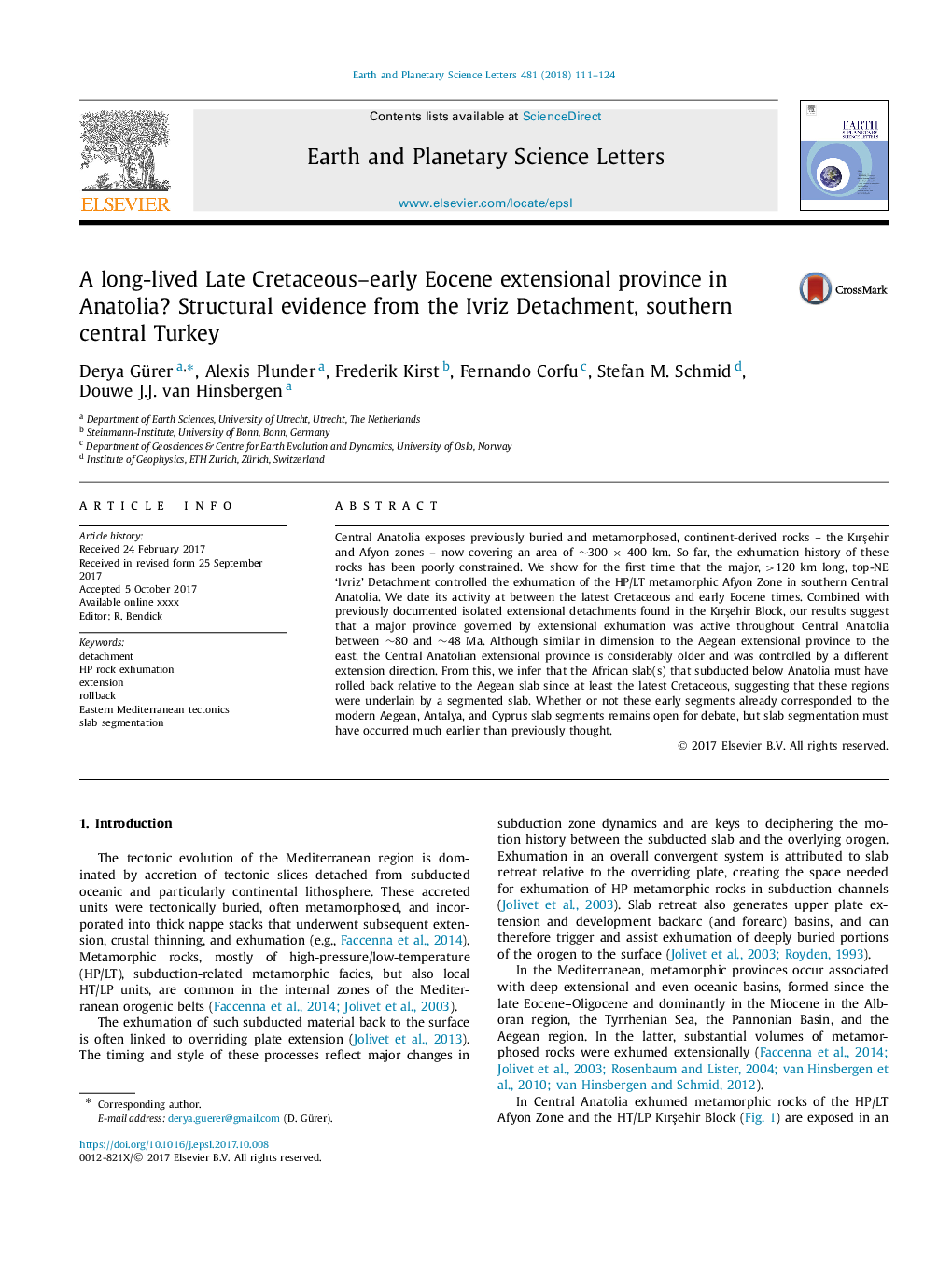| Article ID | Journal | Published Year | Pages | File Type |
|---|---|---|---|---|
| 8907327 | Earth and Planetary Science Letters | 2018 | 14 Pages |
Abstract
Central Anatolia exposes previously buried and metamorphosed, continent-derived rocks - the KırÅehir and Afyon zones - now covering an area of â¼300 à 400 km. So far, the exhumation history of these rocks has been poorly constrained. We show for the first time that the major, >120 km long, top-NE 'Ivriz' Detachment controlled the exhumation of the HP/LT metamorphic Afyon Zone in southern Central Anatolia. We date its activity at between the latest Cretaceous and early Eocene times. Combined with previously documented isolated extensional detachments found in the KırÅehir Block, our results suggest that a major province governed by extensional exhumation was active throughout Central Anatolia between â¼80 and â¼48 Ma. Although similar in dimension to the Aegean extensional province to the east, the Central Anatolian extensional province is considerably older and was controlled by a different extension direction. From this, we infer that the African slab(s) that subducted below Anatolia must have rolled back relative to the Aegean slab since at least the latest Cretaceous, suggesting that these regions were underlain by a segmented slab. Whether or not these early segments already corresponded to the modern Aegean, Antalya, and Cyprus slab segments remains open for debate, but slab segmentation must have occurred much earlier than previously thought.
Keywords
Related Topics
Physical Sciences and Engineering
Earth and Planetary Sciences
Earth and Planetary Sciences (General)
Authors
Derya Gürer, Alexis Plunder, Frederik Kirst, Fernando Corfu, Stefan M. Schmid, Douwe J.J. van Hinsbergen,
